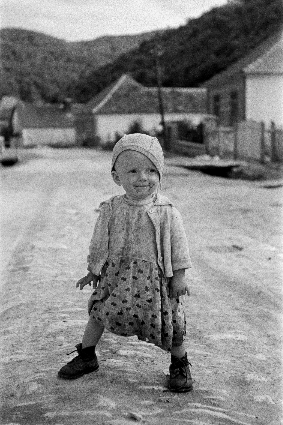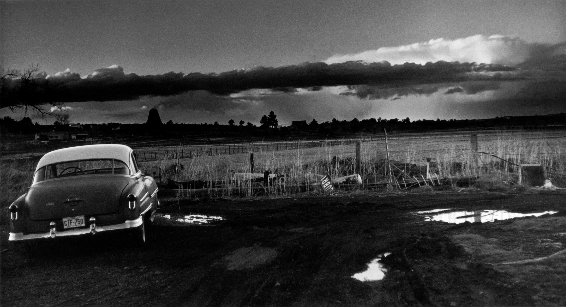The Eye
EXHIBITION
The Ludwig Museum in Budapest salutes Vilmos Zsigmond, the Oscar winning Hungarian cinematographer on his 85th birthday.
| Götz Eszter |
2015-05-08 18:09 |

Vilmos Zsigmond left Hungary in November 1956 shortly after the fall of the revolution against the communist regime. It took decades for Hungarian art life to acknowledge him as part of the Hungarian cultural life and heritage. Since than he has got decorated by the state and even a cinema hall was named after him in Szeged. Many of his Hollywood films are cult classics today, while his contribution to the Bánk Bán opera film in Hungary is also outstanding. Nevertheless, his re-admittance has become full only with this exhibition, which is part of this year’s Spring Festival in Budapest.
 The exhibition, somewhat contradictory to expectations, does not circle around the cinematographer’s films, but introduces Zsigmond Vilmos, the amateur photographer. Considering the he has never made a living from photography, he is amateur, but taking a close look at his photos brings us to the conclusion that what we are dealing with here is far from anything amateur. It is not difficult to notice those traits in the pictures which one can clearly identify in his films too. The two curators, Tomás Opitz és Bea Puskás, approached the photos from art photography and could finally explore and exhibit connections between film and photography in the context of Zsigmond’s unique visual world. This approach and the curatorial choice includes early photos taken on excursions, during urban explorations, or later during location scouting of film shootings.
The exhibition, somewhat contradictory to expectations, does not circle around the cinematographer’s films, but introduces Zsigmond Vilmos, the amateur photographer. Considering the he has never made a living from photography, he is amateur, but taking a close look at his photos brings us to the conclusion that what we are dealing with here is far from anything amateur. It is not difficult to notice those traits in the pictures which one can clearly identify in his films too. The two curators, Tomás Opitz és Bea Puskás, approached the photos from art photography and could finally explore and exhibit connections between film and photography in the context of Zsigmond’s unique visual world. This approach and the curatorial choice includes early photos taken on excursions, during urban explorations, or later during location scouting of film shootings.
From the vast collection, which has not been examined closely so far, the curators selected and juxtaposed thematic groups. In this method, chronological order does exist, but does not define the orientation of the exhibition. Neither do the great films or the topics they cover. Instead, the curators and the visitors are guided by Zsigmond’s special way of seeing things. It is a glimpse that can see something unique and typical in every street, shape or group of people. Zsigmond learnt photography in an autodidactic way and reacted to his environment in an exceptionally sensitive way. He was able to detect and surface the dramatic character of different environments, like the greatest Hungarian social-photographers of the 1950s, Kata Kálmán or Károly Escher did it. However, Zsigmond was rather fascinated by the relations of landscape, the environment and the people than the social message itself. His handling lights is already prodigious at that early time, which is clearly illustrated by his approach to the sunny and the shadowy sides of the streets, for that matter. Composition is strong, but not over-constructed, rather instinctive: it depicts a heavily littered stall with a board on its side propagating proletarian internationalism, an ox cart slowly pacing in the hills or slushy streets in Budapest shot from an unusual angle. There are only two photos in the exhibition from this period which bear the sign of the educated, academic approach: both show his partner. They are clearly set and thoroughly composed. All the rest are about the complex relationship of movements, lights and directions, as if we did not see still pictures but randomly taken moments of processes, almost seeing the previous and the following moment of the scene.

Vilmos Zsigmond and László Kovács left Hungary with 10.000 metres of film shot about the Hungarian Revolution in 1956. Some month later they were sailing towards New York, but now Zsigmond found less interest in taking photos of the other refugees. Instead he turned towards the lights on the sea, the water lashing the board or the sunrise over the ocean. In New York he returned to street photography, and examined the society which had become his new home. In some of his series we already see the logic of filming, the big city scenes providing the background for tiny insignificant events captured in the pictures. And then filming itself in Hollywood with the photos of shootings, location scouting, plus some thematic groups about stormy seas, forests at dusk, genre photos of remote African villages and perhaps the most touching photo: a terrace after a storm on Santorini. The installation is completed with large screen televisions constantly showing excerpts from his films offering parallels to the photos in terms of theme of atmosphere.
The exhibition proves that Zsigmond’s photos are much more than an interesting by-product of a great cinematographer. These pictures carry the style which was later defined as the new Hollywood style, and which was partly linked to Zsigmond’s works and efforts. It was novelty in Hollywood and we find its roots here in Central-Europe. It derives from the films of Pál Fejős or István Szőcs as well as from the Italian neo-realist school. And we also now how influential the masters of the era were: István Eiben or György Illés contributed enormously to bringing up such distinguished cinematographers like Vilmos Zsigmond, László Kovács or Elemér Ragályi.
Photographed by Vilmos Zsigmond
21 June – 10 April 2015
Ludwig Museum, Budapest